The Victorian Cards That Explained How to Use a Book to Flirt
“Resting on right cheek: You are too willing.”
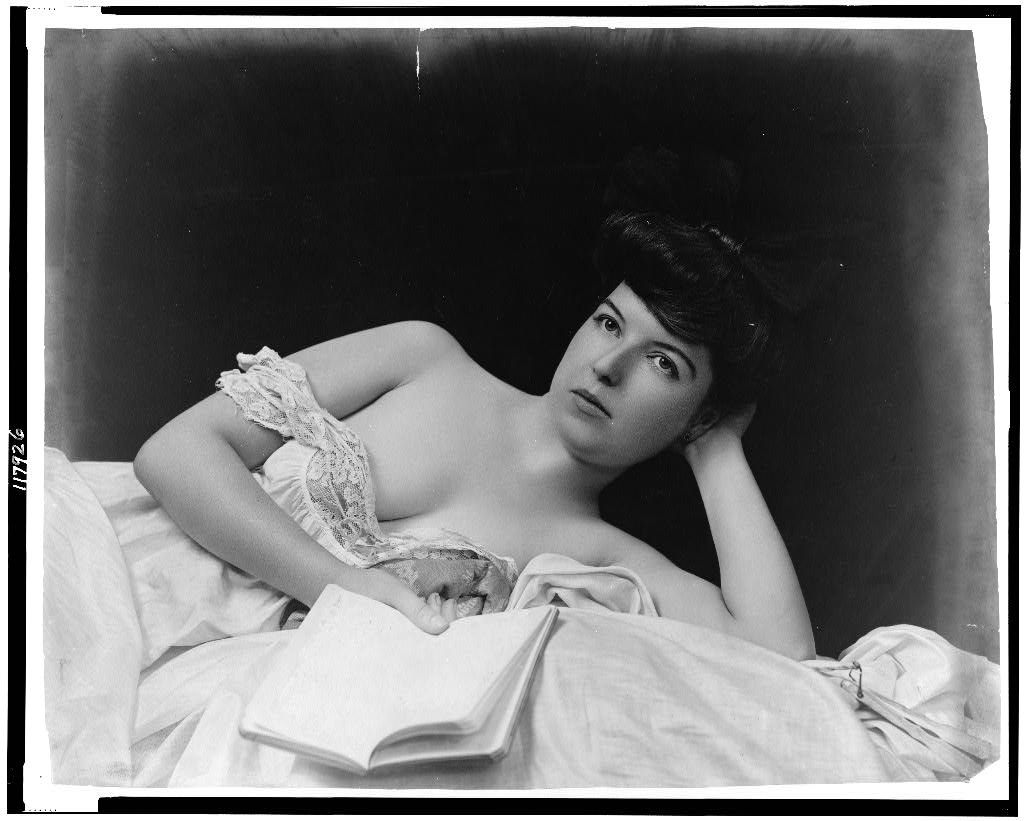
It started with an envelope. Twelve years ago, Sheryl Jaeger, who owns Eclectibles rare bookstore in Tolland, Connecticut, acquired a mass of “family papers” in an auction. Among them was an envelope—and in that envelope were two slips of card, each around the size of a business card, dating from the late 19th century. “I put them aside because I thought they were charming, and didn’t really think I needed to sell them—because I liked them,” she says.
The cards were “flirtations”: coded explanations for how to flirt with the opposite sex, using an item as your prop. In this case, the item was a book. Book leaning against your left cheek? Careful, someone’s watching us. Book on your knee? Let’s talk. Book between your teeth? It’s over.

Her interest piqued, Jaeger has since kept an eye out for “flirtations” at estate sales, auctions, and other hideaways for ephemera. They almost always come in the form of printed or handwritten cards, slightly larger than a matchbox. “Once you find one thing, you start looking for other things,” she says. “And I’ve now come up with a pencil flirtation, eye flirtations, hats flirtations, handkerchief flirtations…” But what was the point of these ciphers? Was every handsome stranger holding a book upside down really asking, “Do you love me?”
Calling cards are a well-documented phenomenon of Victorian Britain and the late 19th-century United States. Professionally printed with someone’s name, and often their photograph, they had a complex function in social interaction and were variously used to announce a forthcoming visit, invite someone to your home, or denote that you had attempted to visit someone at their home while they were out.
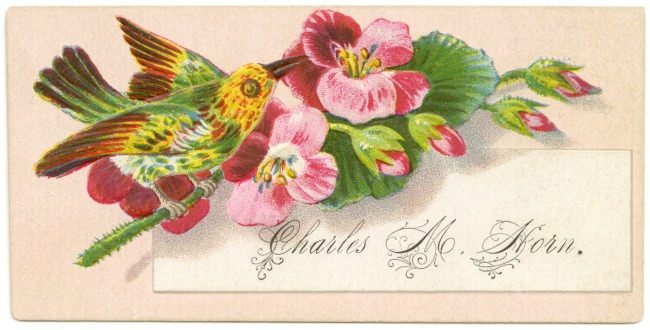
“Flirtations,” however, don’t seem to have had a practical function. According to Alan Mays, a collector of Victorian ephemera, “The coded gestures really seem too complicated for easy communication.” Jaeger has a similar take. A possible analog is the often-cited language of flowers—the idea that Victorians were all extremely well-versed in the subtle difference between a yellow and a white rose.
In The Language of Flowers: A History, the author Beverly Seaton dispels this notion. “To modern enthusiasts, no feature of Victorian popular culture appears more charming, more cozy, or more absolutely Victorian than the language of flowers. But, in reality, none is more obviously misunderstood.” It’s likely that these cards served a similar function to dictionaries for the meaning of flowers: a gift that Seaton says were primarily to “entertain a genteel female reader for a few dull afternoons,” rather than send coded floral messages to a suitably repressed paramour. According to Seaton, in fact, “There is almost no evidence that people actually used these symbolic lists to communicate, even if the parties agreed upon what book to use for their meanings.” Rather than being ciphers in forbidden love stories, in fact, cards of this nature may have simply been whimsical gifts from one friend to another.
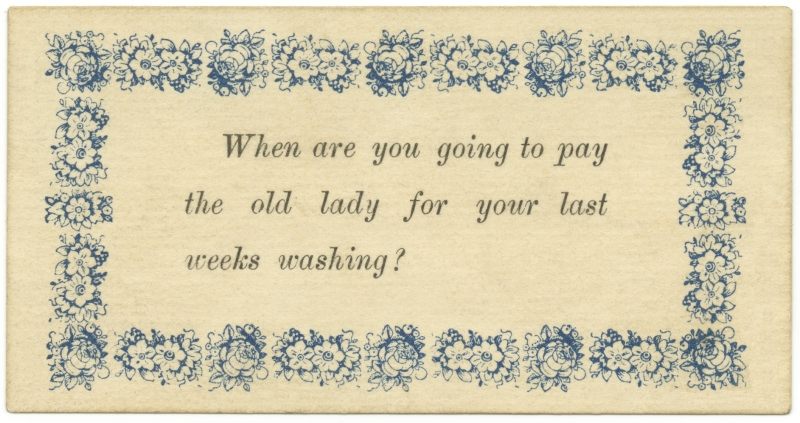
Other pre-printed cards were swapped between friends and then pasted into scrapbooks for safekeeping—some of which contained sentiments largely unintelligible to a modern reader. On one, the “Anti-Poke Your Nose Into Other People’s Business Society” seeks “a person at a salary of $500 a year, with a periodical increase to $1,000, to mind their own business and let other people’s business alone.” A common, if puzzling, message reads: “When are you going to pay the old lady for your last week’s washing?”
But there were some flirtatious cards which could be used to court members of the opposite sex. Exclusive to the United States were “escort” or “acquaintance” cards, which usually included a pick-up line and were designed to be slipped into the clutches of a prospective beau. “I very much desire to make your acquaintance,” reads one. Another more direct version wastes neither time nor letters: “May I. C. U. Home?”
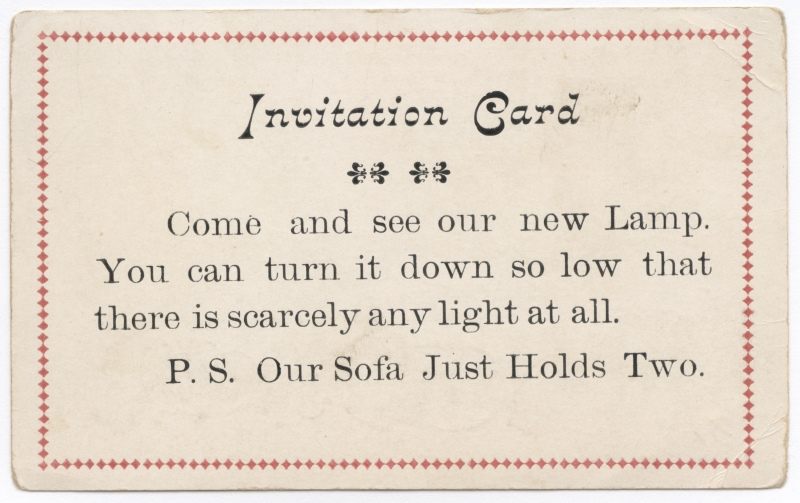
These pre-printed love notes had an obvious utility. “As the 19th century progressed,” writes Canadian collector Barbara Rausch, “rules of deportment became more rigid, and cards helped define the complicated new social code and express its growing sentimentality.” Escort cards were discreet, demonstrated a certain amount of disposable income to spare on frivolities, and often quite humorous—who could resist a card decorated with a musket and a guard dog that reads: “I will risk everything depicted here if you will permit me to see you as far as the gate”? Young people wanted to flirt with one another; the cards were just one very small part of it what the pearl-clutching Morning Oregonian, in 1871, called “apparently innocent indulgences” that paved the way “to ruin.”

So while coded flirtations involving props were probably ineffectual, flirtatious cards were not. It seems unlikely that anyone ever successfully dropped a book to tell someone that they needed to speak to them, pronto. But it didn’t stop late Victorian anti-obscenity crusaders from confusing the two, and worrying that they might. Mays gives the example of the politician Anthony Comstock whose “dire warnings,” he says, “seem somewhat overbearing.” In his 1883 text Traps for the Young, Comstock writes:
“I refer to the ‘handkerchief’ and ‘glove’ flirtation cards, by which means the schoolgirl is taught how to respond to signals from male prostitutes … Some are harmless, while others show that by a simple turn of the hand with a handkerchief or glove in it, an impure suggestion is meant to be conveyed. By this means an innocent girl may be drawn into the meshes of the net of the veriest scoundrel.”
The codes might not have worked for the general public—but they seem to have been closely scrutinized by those for whom they were least intended.

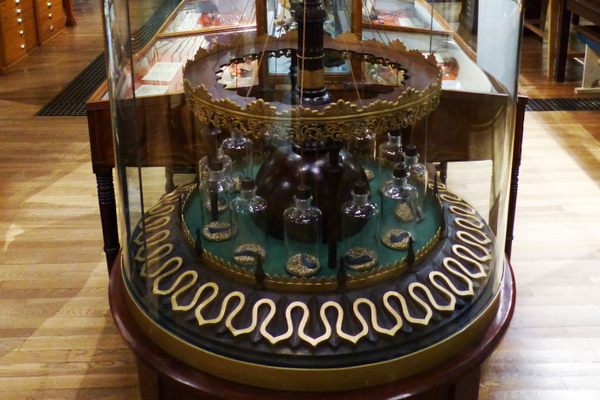






















Follow us on Twitter to get the latest on the world's hidden wonders.
Like us on Facebook to get the latest on the world's hidden wonders.
Follow us on Twitter Like us on Facebook